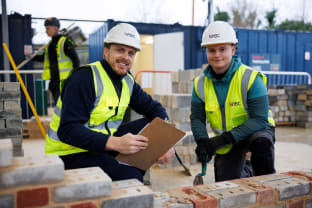
The NHBC Foundation, which delivers research on housing supply and work that leads to improved technical knowledge in the house-building industry, has published a new report; The UK’s progress towards a Passivhaus standard in new homes. A follow-up to research it undertook more than ten years ago examining whether Passivhaus could address climate change objectives, this report considers the delivery of Passivhaus at scale as well as highlighting where progress has been made.
A decade on some concerns, particularly for consumers, have shifted; recent energy price increases have made homeowners more aware of the running costs of homes and the need to reduce energy consumption.
Understanding Passivhaus
Passivhaus is an energy-efficient building design and construction concept that originated in Germany in the 1980s. The concept is owned by the Passivhaus Institute of Darmstadt, which strictly regulates the certification of buildings and ensures quality standards are upheld.
The fundamental principle behind Passivhaus is to create structures that minimise the need for active heating or cooling systems. Through a combination of design strategies and high-quality building materials, Passivhaus buildings aim to maintain a comfortable indoor environment throughout the seasons while also substantially reducing energy consumption.
What is the impact of Passivhaus?
Considering one of the biggest contributors to the UK’s greenhouse gas emissions is the built environment (accounting for up to 30% of all emissions according to RICS’ report on decarbonising UK real estate), it’s clear new homes will need to be delivered with low energy demand and zero-carbon ready.
Progress on Passivhaus development in the UK has been slow however, with only an increase of 2,735 fully certified buildings having been constructed in the UK since the original NHBC report was published in 2012. Yet there’s been a notable shift in building regulations to improve the energy efficiency of dwellings.
What does this mean for house builders?
There’s been an increase in the adoption of Passivhaus principles in the country's construction industry. This progress has not been at the pace that many would wish due to challenges related to education and perceived costs. The report explores the concerns raised by house builders about the feasibility of developing homes at volume to Passivhaus standards. It also looks at the barriers to adoption and highlights the opportunities being brought forward through government policies across the UK.
Passivhaus can benefit house builders through its capability beyond being ‘just’ a building standard; it’s also a premium comfort standard. By offering environmental advantages, significantly reduced utility bills and enhanced indoor air quality, it provides tangible, long-lasting benefits to the homeowner.
House builders are understandably cautious about the risks associated with adopting this approach and there’s a recognition consumers might not yet be ready for the lifestyle changes required to fully embrace living in a Passivhaus. If the long-term adoption of Passivhaus is to be used as a solution for the UK’s growing demand for energy-efficient buildings, there’s a clear need for increased understanding and funding.
The UK building industry’s ability to adapt is well-known but there also needs to be a cultural shift to support the transition to net zero homes. To reach net zero, UK homes will have to be constructed considerably closer to the Passivhaus principles. This means that the homes of the future will need to be more airtight and include new ventilation methods to accommodate this.
Consulting the experts
NHBC Foundation has produced this report in partnership with Sava, a team of building physicists and engineers with extensive experience in supporting the residential property sector through education, technology and professional services. The report was also supported by several major house builders and the Passivhaus Trust.
How can I find out more about Passivhaus?
Since NHBC published its first report on Passivhaus in 2012, the standard has continued to evolve in the UK, providing recognition for sites incorporating renewable energy generation, retrofit projects and for developers requiring a transition towards full certification. There’s no doubt the momentum of Passivhaus has laid the groundwork for many of the improvements we can make today.
Latest articles

Land Quality Service Leads Discussion at Brownfield Summit 2025

Northstowe Training Hub Approved

New report from NHBC Foundation projects five billion litre potable water shortfall in UK by 2050
